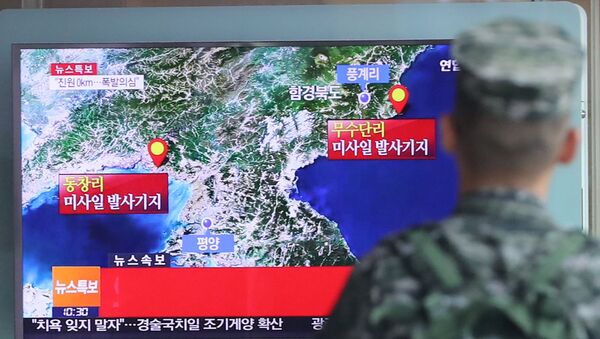"Nothing has been registered [in the Sea of Japan]. If [North Korea] had launched [missiles], we would see it on our monitors; because when North Korea tested nuclear weapons several times in 2017, all these incidents showed on our screens and we processed seismic events. Now, we do not see anything. Or, North Korea might have fired [projectiles], but maybe a kiloton [projectile] was not enough [to provoke a seismic event] and that is why we have not detected anything", the centre’s spokesperson said.
The spokesperson added that during North Korea’s nuclear weapons tests in 2017, the center registered seismic events close to the Primorsky Territory’s Khasansky district, located close to the North Korean border.
Local meteorologists said that radiation background in the area did not exceed 11-12 micro roentgen an hour on Friday, while the permissible level was 30 micro roentgen.
South Korea’s Joint Chiefs of Staff said earlier in the day they had detected the launches of two projectiles, appearing to be short-range missiles, by North Korea.
The most recent reported projectile launches by North Korea follow several weapons tests Pyongyang carried out over the past several weeks.
North Korea’s state-run KCNA news agency has reported that on Wednesday, Pyongyang test-fired a new large-caliber multiple launch guided rocket system under the supervision of the country's leader Kim Jong Un.
Moreover, last week, Pyongyang test-fired two other projectiles that appeared to be short-range missiles, too.
The launches were the first weapon tests by North Korea since a series of missile launches last May.


